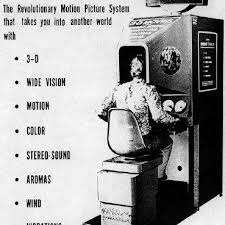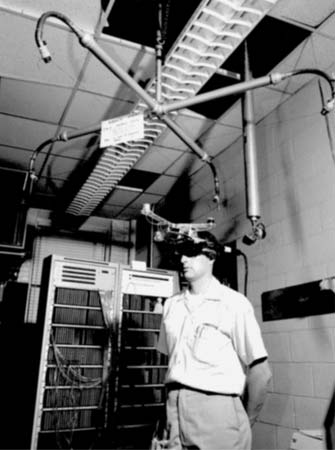Technology
VR technology and its applications
Philosophy has often questioned the difference between reality/real world and appearance/virtual world. More specifically on how our senses can be modified by ‘virtual/not real’ phenomena.
E. Kant, in his Critique of Pure Reason (1781), underlines how the appearance/semblance (Schein) of all phenomena, of all objects is never just appearance, but a real data. Just as consciousness, the awareness of the existence of something is linked to its appearance, its essence is linked to its phenomenal manifestation (G. W. F. Hegel).
F. H. Bradley, in Appearance and Reality (1893) argues that the knowledge is always and only linked to the appearance, so that we can know only what appears.
The first to use/invent the term “Virtual Reality” was a French writer, Antonin Artaud (Marseille, 4 September 1896 – Ivry-sur-Seine, 4 March 1948). Artaud was a playwright, actor, essayist and theater director. In writing his essay “The theater and its double” (1936) he used these words for the first time, virtual reality. He was not very successful, also due to a series of important mental health problems that led him to internment in a psychiatric clinic for many years.
We will have to wait about fifty years and a new technological development called digital, to see the term virtual reality reappearing and becoming more and more popular.
At this point of the explanation a digression on the concepts of virtual and virtual reality is mandatory.
Experiencing other realities, virtual realities in fact, belongs to the innate and acquired abilities of the human being. Isn’t the experience of dreaming a way to enter a virtual reality? When, during a particularly interesting reading, we are absorbed, even lost, in another world, the one we imagine thanks to the literary stimuli, aren’t we experiencing more or less long moments of virtual reality? The phenomenon of the waking dream, widely documented and described is another example of living a ‘virtual’ reality.
Again…Physiology describes the natural phenomena of alteration of consciousness in the phases that precede falling asleep (hypnagogic images) and awakening (hypnopompic images), which have a great significance of reality but are virtual. Finally, isn’t it a world full of virtual reality, what the experimenters of psychotropic substances, in particular hallucinogens, describe to us?!
The experience of living virtual realities is an intrinsic ability of man, philontogenetically determined, and it doesn’t need an external machinery creating it.
But let’s get back to our history of the term virtual reality.
The first to create a virtual reality machine was, in 1962, Morton Leonard Heilig (December 22, 1926 – May 14, 1997), American director, cinematographer, inventor and cameraman. He patented the “Sensorama Machine, the ExperienceTheatre”

This device was able to let the spectator experiencing olfactory, auditory, tactile, movement stimuli, linked in a synchronous way, to the cinematographic film he was seeing. Unfortunately for Heilig, his invention did not have the expected success and, due to the lack of financial coverage, the project was abandoned, just one prototype was made.
48 years later J. Cameron’s film Avatar 4D (2010) was screened in Korea, with 30 special effects, including the mobile chair very similar to the Heilig’s Sensorama machine. A projection with this technology allows a remarkable cinematic identification, but does not create any interaction between the viewer and what happens on the screen. There is a high degree of use, but to get to the interaction, other technological tools and specific software will be needed.
The mouse is the first user / machine interface. The first patented model was conceived, in 1967, by Douglas Engelbart (1925 – 2013), then taken up and improved by Apple. Almost simultaneously, the studies for the construction of the first Viewer by Ivan Edward Sutherland led to the creation, in 1968, of the first viewer, together with a vireframe software that allowed the crossing of rooms. A curiosity, the viewer was so heavy that it had to be hung from the ceiling so as not to burden the user’s head excessively, so much so that it was called The Sword of Damocles.

From here on, there will be a big acceleration of both the development of software and hardware, and of the technological tools for human / machine interaction. The first virtual software was created by MIT in 1977 and allowed users to walk the streets of Apen city in Colorado; it had a still poorly realistic graphical interface. The big leap in quality took place in 1989 by Jaron Lanier, computer scientist and American writer, who used the term Virtual Reality to define digitally reconstructed scenarios. He founded the Virtual Programming Languages Research (VPL) and created the first VR computer languages. Shortly before, in 1982, the science fiction writer William Gibson (born in 1948), had coined the term cyberspace, imagining worlds populated by human beings in which the cybernetic graft allowed the extension of one’s abilities and another world, the virtual one, where the protagonists of his novels were able to move. It is interesting to note how often, from Jules Verne (1828 – 1905) onwards, “visionary” writers have anticipated the realization of future technologies.
In the 1980s, an important government agency of the Department of Defense of the United States of America (DARPA) decides to finance the Cybertherapy studies. Cybertherapy is realized through VR programs ( 3D digital environments) initially to learn surgical techniques in military situations, then for neuro-motor rehabilitation programs and psychological therapies for psychiatric and addiction disorders. The most important Italian institute is the Auxological Hospital of Milan and the treatment programs are directed by prof. Giuseppe Riva of the Catholic University of Milan.
The continous growing of the technology and the related hardware are more and more improving the human / machine interaction in virtual environments. In the last decade we passed from bulky machinery to modern, light, easy to use viewers, trakers and quarries. If at first you needed overalls, gloves, bulky visors, wires, now modern tools garanteee a ver easy interaction and a remarkable level of immersion.
The substantial difference between immersive and non-immersive Virtual Reality lies in the level of involvement of the subject in the virtual world. In the first one, the immersive, a full involvement is achieved; in the second one, the non-immersive one, the subject is able to just see the virtual world from the screen.
Considerable progress has also been made in the possibility of stimulating other senses, besides sight and hearing. Now it is possible to insert olfactory stimulations that increase the level of involvement of the subject. Even on the software side, programmers have raised the level of graphics that are becoming more and more realistic.
Bibliography
PAIN AND ANXIETY
- The effectiveness of virtual reality on reducing pain and anxiety in burn injury patients: a systematic review. View More
- Virtual reality for pain and anxiety management in children. View More
- Computer-generated virtual reality to control pain and anxiety in pediatric and adult burn patients during wound dressing changes. View More
- Systematic Review and Meta-analysis of Virtual Reality in Pediatrics: Effects on Pain and Anxiety. View More
EATING DISORDERS
- From body dissatisfaction to obesity: how virtual reality may improve obesity prevention and treatment in adolescents. View More
- Letter to the Editor: Virtual reality in the treatment of eating and weight disorders. View More
- The Effect of a Virtual-Reality Full-Body Illusion on Body Representation in Obesity. View More
PSYCHIATRIC DISORDERS
- Evidence on Virtual Reality-Based Therapies for Psychiatric Disorders: Meta-Review of Meta-Analyses. View More
- Virtual Reality Therapy in Social Anxiety Disorder. View More
- Virtual reality in the assessment, understanding, and treatment of mental health disorders. View More
- Efficacy of virtual reality exposure therapy in the treatment of PTSD: A systematic review
- A Randomized, Head-to-Head Study of Virtual Reality Exposure Therapy for Posttraumatic Stress Disorder. View More
- Virtual Reality-Enhanced Extinction of Phobias and Post-Traumatic Stress. View More
- Virtual reality exposure therapy for the treatment of posttraumatic stress disorder: a methodological review using CONSORT guidelines. CONSORT guidelines
ADDICTIONS
- Virtual Reality (VR) in Assessment and Treatment of Addictive Disorders: A Systematic Review
- Smartphone applications for immersive virtual reality therapy for internet addiction and internet gaming disorder. View More
- (No) escape from reality? Cigarette craving in virtual smoking environments. View More
- Virtual Reality Cue Refusal Video Game for Alcohol and Cigarette Recovery Support: Summative Support
- The effects of a virtual reality treatment program for online gaming addiction. View More
- Applications of virtual reality in individuals with alcohol misuse: A Systematic Review
- A Psychophysiological and Behavioural Study of Slot Machine Near-Misses Using Immersive Virtual Reality. View More